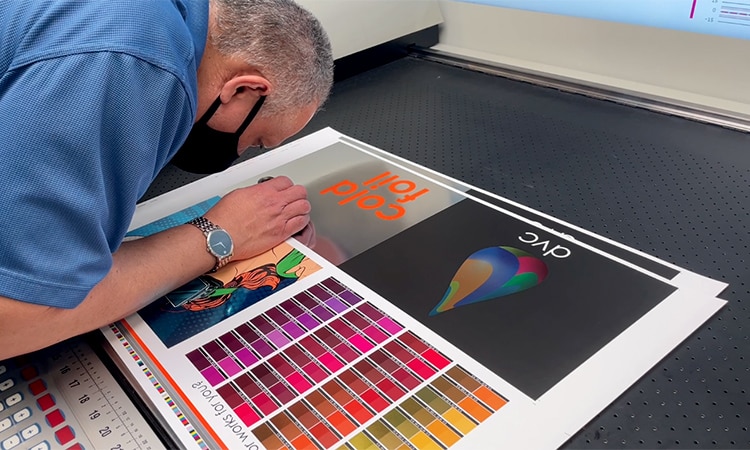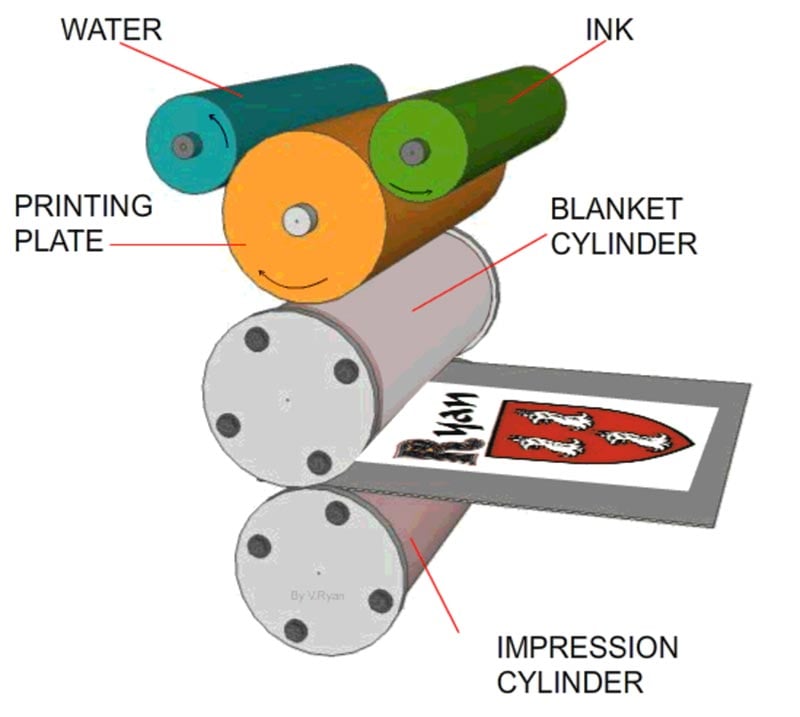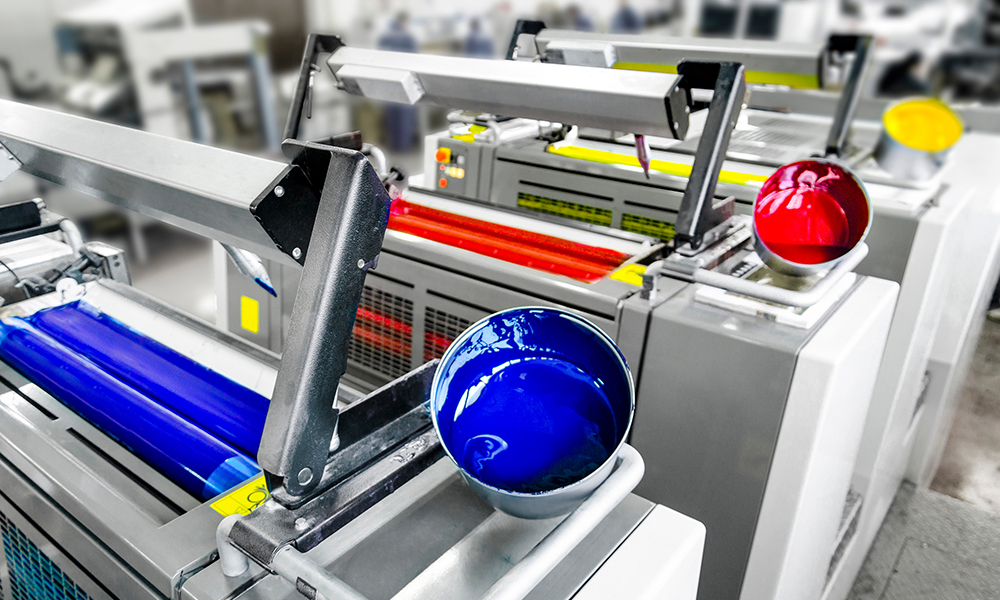A Comprehensive Guide to Understanding Litho Printing Strategies
The globe of litho printing, a technique stemming from the late 18th century, is an interesting blend of background, advancement, art and science. This detailed guide will certainly unravel the intricacies of this printing method, from the structure of litho inks to the challenges dealt with in modern applications. As we venture right into the intricacies of lithography, the value of automation and sustainability in ensuring its future importance ends up being progressively clear. Stick with us as we journey into the exciting world of litho printing.
The Historical Advancement of Litho Printing
The historical trajectory of litho printing, a pivotal technology in the realm of communication, is an exciting tale of human ingenuity. Birthed in the late 18th century by Alois Senefelder, this method was originally an affordable method of publishing theatrical works. Lithography, originated from the Greek words for 'stone' and 'to compose', used a smooth rock surface area to move photos onto paper. The procedure advanced with the advent of the rotary press, which significantly boosted efficiency (litho printing). In the 20th century, the advancement of countered lithography changed the sector, permitting mass manufacturing of premium prints. Each stage of litho printing's development showcases humankind's ruthless pursuit of efficiency and quality in visual communication.
Translating the Scientific Research Behind Litho Printing Inks
Moving on in the expedition of litho printing techniques, the emphasis now moves to the science behind litho printing inks. The make-up of these inks, their drying process, and shade mixing methods form the backbone of this intricate art type. Comprehending these components is vital to understanding the craft and achieving the wanted print results.
Composition of Litho Inks
In lithographic printing, the basic duty of litho inks can not be overstated. The make-up of litho inks differs depending upon its function, but generally, they contain two major components - cars and pigments. Pigments, the color-providing elements, are carefully ground particles suspended in the automobile, a liquid that lugs the pigment onto the printing surface area. The car is an intricate mix of resins, oils, and solvents, which affect the ink's drying time, bond, and gloss. Additionally, numerous additives exist to improve particular homes like circulation, drying, and resistance to ecological results. Each element plays a critical part in the final print's quality, making the precise solution of litho inks a complex science.
Ink Drying Process
From the structure of litho inks, interest turns to the fascinating process of ink drying. 2 key techniques are utilized in litho printing: oxidative drying out and absorption. Absorption, on the other hand, entails the ink leaking into the paper fibers, which is a much faster process but can lead to much less dynamic colors.
Shade Mixing Techniques
While the drying out process plays a key duty in litho printing, the scientific research of color mixing strategies holds equal significance. This is a complex procedure that entails the careful mixing of main shades: cyan, magenta, and yellow, in differing proportions to attain a vast range of hues. The enhancement of black ink, referred to as 'crucial', assists in regulating the strength and deepness of the shades. The science behind litho printing inks likewise thinks about the openness of the ink, which affects exactly how shades overlay and mix. To achieve a reliable color mix, print specialists should additionally comprehend the intricacies of ink habits, shade theory, and the physical properties of the Read Full Article substratum on which the ink is used.
The Art and Design Aspects in Litho Printing
Litho printing breathes life right into art and layout via its unique components. The procedure includes creating an image on a lithographic limestone plate or metal plate with a smooth surface. The photo is then published onto a tool, generally paper, by transferring the ink from home plate. What sets litho publishing apart is its capability to replicate intricate styles with high integrity, making the output almost identical to the initial art work. This is accomplished with the usage of various line strategies such as cross-hatching, hatching, and stippling, which permit for an array of tonal results. Furthermore, litho printing fits a range of colors, allowing musicians to produce vibrant and lively prints. This combination of accuracy and versatility makes litho printing a preferred choice for numerous artists and developers.
Modern Applications of Litho Printing Techniques
Litho printing methods have discovered comprehensive usage in the modern-day industrial field. Its influence and importance remain to expand with the development of new technologies and innovations in the area. This section will certainly explore these contemporary applications and the transformative function they play in the printing industry.
Industrial Litho Printing Makes Use Of
Litho printing continues to be an important part of the industrial market. High-volume printing jobs, such as the manufacturing of publications, papers, and product packaging, count on litho printing for its capacity to supply premium photo top quality and price performance. Litho printing additionally gives a wide shade spectrum, exceptional to that of digital printing.
Developments in Litho Printing
Pushing the borders of conventional strategies, modern-day developments have actually fueled a host of technologies in litho printing. One prominent development is electronic litho printing, which incorporates the merits of digital modern technology with litho's top notch outcome. These innovations highlight the long-lasting significance of litho printing in the modern globe.
Discovering the Process of Litho Printing: Action by Action

Obstacles and Solutions in Contemporary Litho Printing

Regardless of the accuracy and custom that litho printing happily supports, it is not without its collection of contemporary difficulties. The most look here common concerns include the high preliminary setup expense, difficulty in printing variable data, and environmental concerns as a result of chemical use. However, solutions are becoming technology develops. Digital litho printing enables cost-efficient short runs and easy personalization, resolving the issue of variable information. Environmentally-friendly inks and safer plate-making procedures minimize environmental issues. Furthermore, innovations in automation have actually reduced labor costs, better equalizing the lithography procedure. Thus, while there are obstacles, the litho printing sector is proactively adjusting to fulfill them head-on, guaranteeing its significance in the future.
Verdict
In final thought, litho printing, with its rich history and clinical details, holds a substantial area in the print industry. The future of litho printing pivots on its ability to adjust to these transforming needs, verifying its long-lasting value in an advancing market.
